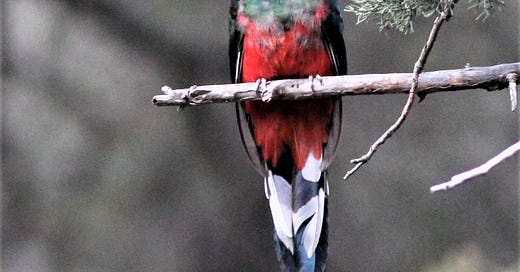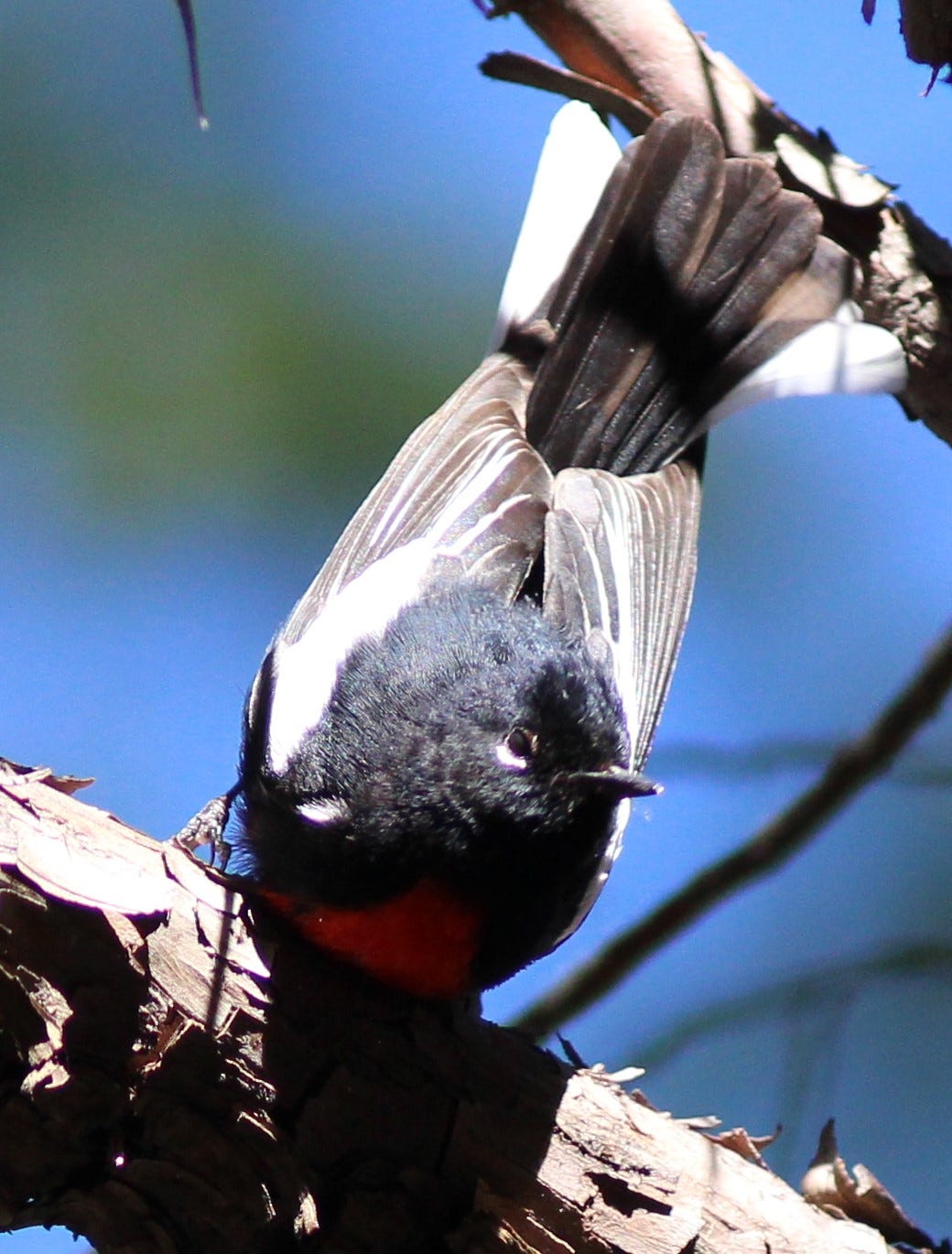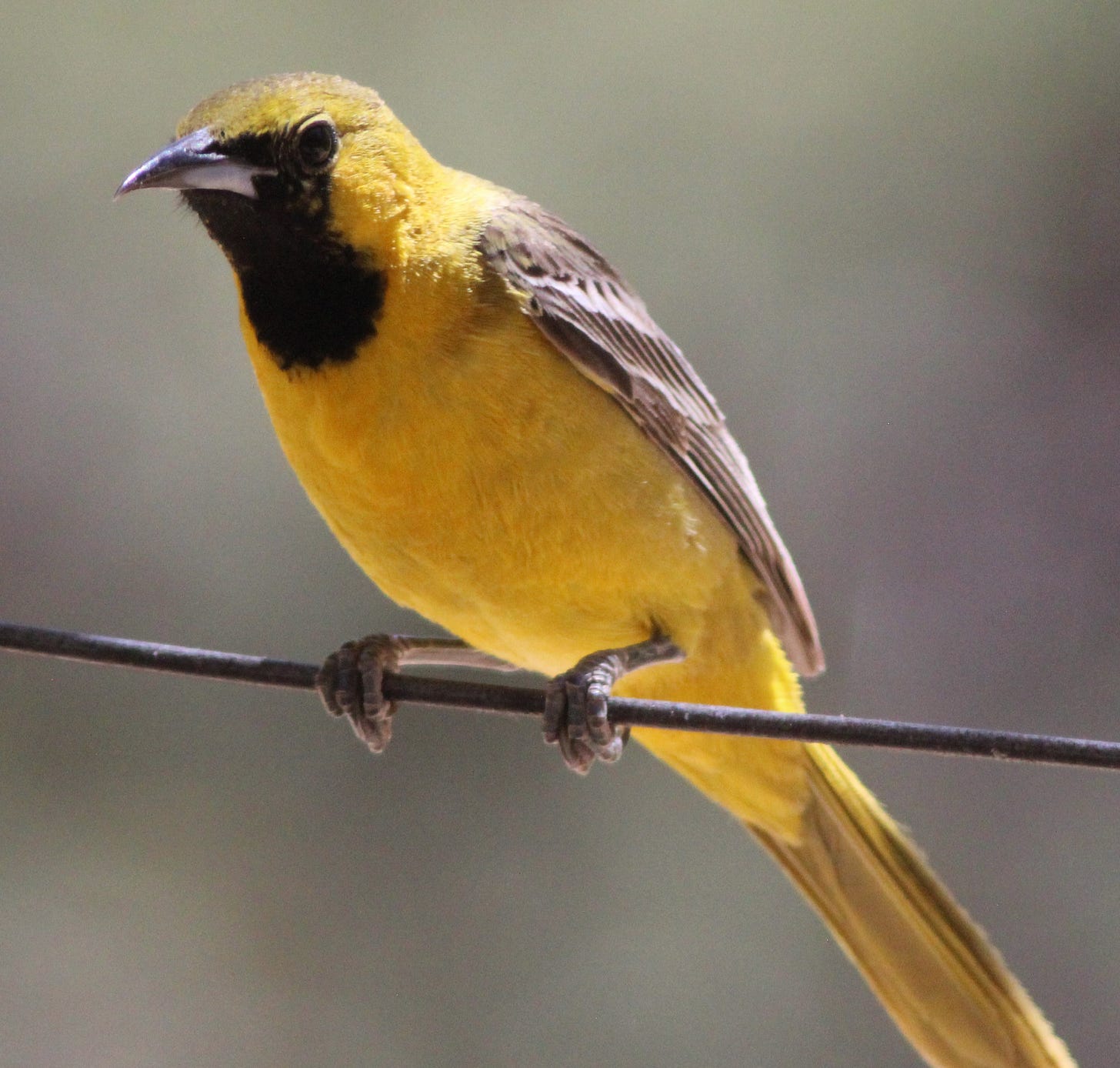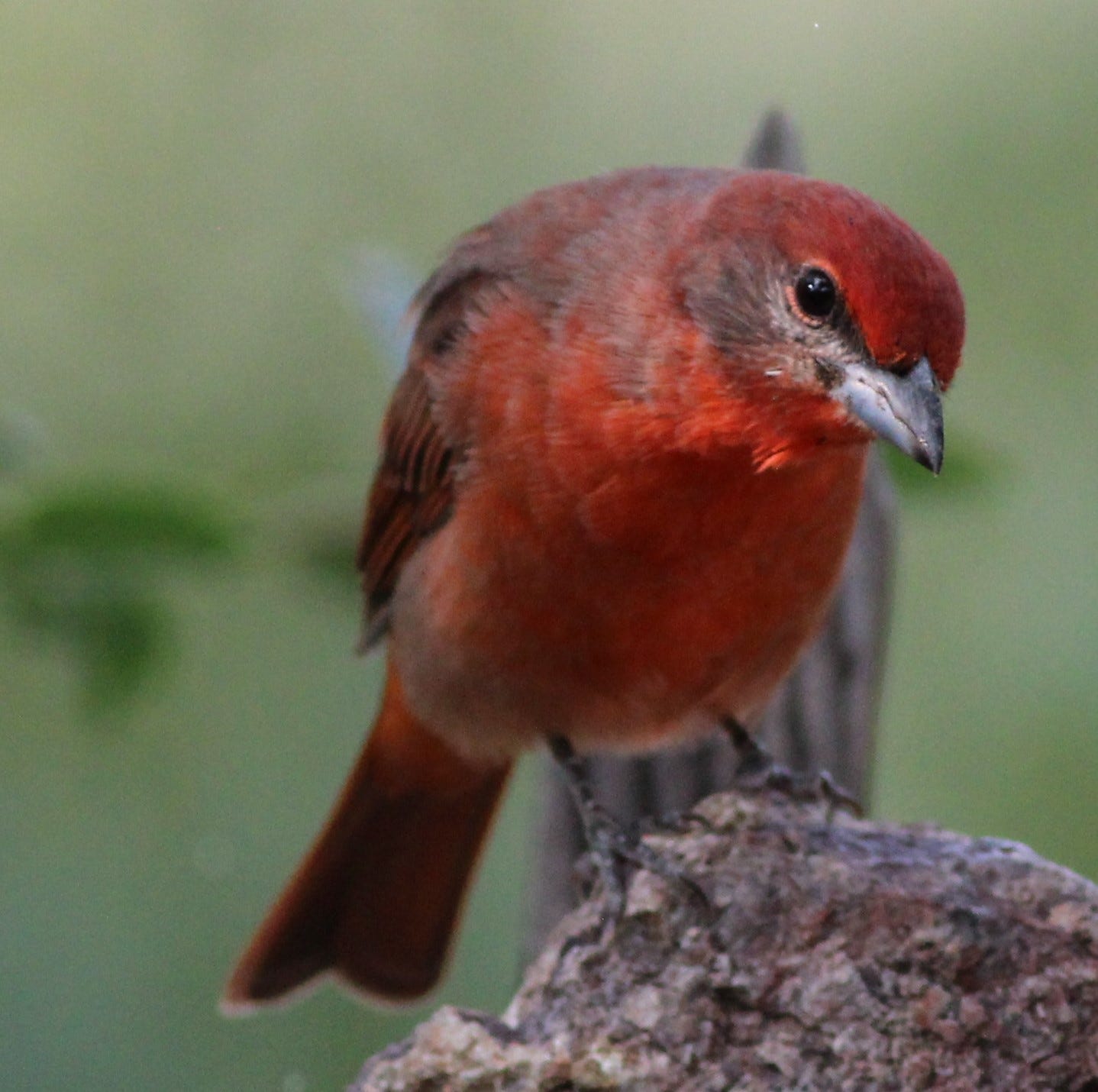Day 8 of the Quarantine (March 21, 2020)
All restaurants, gyms, movie theaters, and bars are closed to the public. Bisbee’s St. Elmo, Arizona’s oldest and longest continuously operating watering hole (since 1902), has dried up.
I think about this while refilling the birdbath.
My friend Chris Nye arrives for lunch bearing homemade orange marmalade. I grill last summer’s brown trout with fresh herbs and we talk about the latest issue of Orion magazine.
A week ago, I gave a presentation in the Chiricahua Mountains, one of my favorite places in southeast Arizona, the seasonal realm of near-magical migrant birds like elegant trogons and eared quetzals, the latter of which I am still hoping to encounter there—maybe this summer! At the Southwest Research Station, 50 Orion writers had gathered from all over the West for the annual environmental writer’s workshop, “Orion in the Wilderness.” Some time ago, Chris had asked me if I would give a talk about the local natural history and take everyone on a bird hike. Last year, author Craig Childs, who was teaching along with writer Amy Irvine, joined the hike. At some point, we had gathered at the stream and Craig, who had never been to the Chiricahuas previously, mentioned he always drinks the water from the place he travels to.
“What about Giardia?” I asked him, thinking that drinking a local beer would be safer. I had never experienced the intestinal parasite commonly found in western creeks, but I knew friends who had, who had suffered the endless days of vomiting and diarrhea. “I’ve always thought of Giardia as a great weight-loss program.”
“It isn’t,” Craig said. “You gain it all back.”
This year, Orion’s Editor-in-Chief, Chip Blake, joined us, hoping to get his first Montezuma quail. (He had to settle for Mexican jays and painted redstarts, although one of the students flushed a covey of the quail during our hike.) It was my first presentation during the pandemic, and we greeted each other by touching elbows. I guessed it might be my last presentation for the year. Maybe longer.
My wife and Chris discuss how the Earth might endure. “I feel both hope and despair,” she says, referring to an Orion story about a child at a protest in London dressed in a red cape who writes a note in chalk on the sidewalk pleading for her future.
It reminded me of a bumper sticker on the back of a Winnebago I saw while driving I-10. We’re spending our children’s inheritance, it proudly announced. The awful irony is that it’s not about money, this generation fending for its own well-being. It never has been. It’s more an individual interest, “I’ve-got-mine,” attitude. An attitude that votes against anything community, anything smacking of “socialist,” (except Medicare-for-us-only). It’s like we’ve forgotten what sacrificing for the next generation means. Boomers are spending the future of the planet.
Almost sixty years ago, around the time of the birth of the two boomers in this house, Rachel Carson wrote about this lost inheritance. “Over increasingly large areas of the United States,” she writes in Silent Spring, “spring now comes unheralded by the return of the birds, and the early mornings are strangely silent where once they were filled with the beauty of bird song.” Imagine no liquid fluting of orioles. No metallic chups of tanagers.
We boomers are like DDT. We are a biocide. Our damage will be felt long after we are gone. From the planet’s perspective, the tragedy of this pandemic won’t be the loss of life. As they say, Mother Nature is a serial killer. The real tragedy will be going back to the status quo.







Very well said and once again beautiful photos!